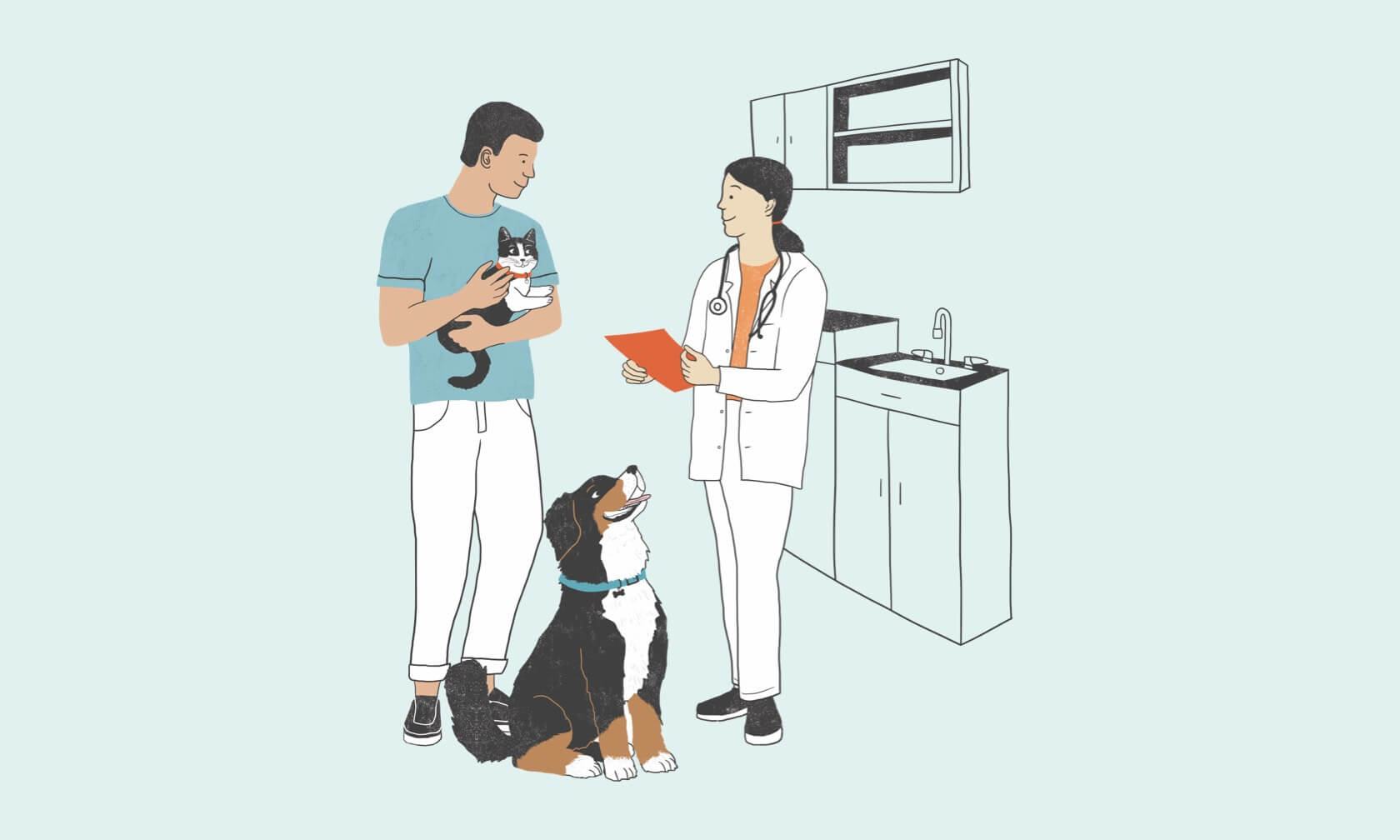There are more than two million working parts in just one of your dog’s eyes. Relative to its function, the eye is the second most complex organ of the body. (And sometimes, things go wrong.) Abnormalities like cataracts can impact your dog’s ability to see clearly. Cataracts are a common cause of vision loss and blindness in dogs. It’s helpful to understand what cataracts are, how they’re treated, and how they may affect your dog.
What Are Cataracts in Dogs?
Your dog’s retina lines the inner back portion of the eye. The eye also contains a soft, transparent, flattened sphere called the lens that directs light onto the retina to help with focus, providing clear sight. The lens holds collagen and precisely arranged fibers made from protein and water.
When the fibers and protein of the lens start to break down and clump together, the lens becomes cloudy. This means light can’t reach the retina, and vision is impaired. Regardless of whether this cloudiness is just a speck, part of the lens, or the entire lens, it’s called a cataract.
Your dog’s cataract will be characterized in one of four ways, based on how much of the lens is affected.
Incipient Cataract
Less than 15% of the lens is affected. Vision may be somewhat impaired, but generally, most dogs can see clearly.
Immature Cataract
15% to 100% of the lens is affected, and the tapetal reflection (the reflective layer at the back of the eye) is still present. At the lower end of the scale, your dog will have some change in vision but still be able to see. When the lens is 60% to 75% affected, there is significant visual impairment.
Mature Cataracts
The entire lens is affected, and there is no tapetal reflection. Your dog can still detect changes in light but is technically blind.
Hypermature Cataracts
The entire lens is affected, there is no tapetal reflection, and there is wrinkling of the lens because it has begun to shrink. Lens-induced uveitis (inflammation of the middle layer of the eye) is often present and causes pain, redness, and squinting.
Some cataracts can worsen over time, while others come on suddenly. Whether they progress to total blindness depends on the cause. A veterinary ophthalmologist can often predict the degree of future progression after a thorough exam.

Causes of Cataracts in Dogs
There are several reasons dogs develop cataracts.
- Genetic factors.
- Endocrine diseases (such as diabetes mellitus)
- Trauma to the eye
- Metabolic disorders
- Nutritional deficiencies
- Inflammation within the eye
- Progressive retinal atrophy
- Glaucoma
- Age-related disease
Signs and Symptoms of Cataracts in Dogs
At the earliest stages of cataract development, you may not notice obvious symptoms. The first would likely be changes in pupil size or shape. However, you may pick up on subtle changes in your dog’s behavior like:
- Slowness
- Reluctance to climb or jump
- Difficulty judging distance
- Difficulty catching/fetching
- Bumping into things
As the condition progresses, you will notice that the eye appears cloudy.
Some dogs can experience pain or discomfort due to inflammation. Left untreated, it can lead to glaucoma. Therefore, if you notice any signs of eye pain or discomfort, it’s important to contact your veterinarian. These signs include:
- Redness
- Squinting
- Tearing
- Rubbing eye
- Elevated third eyelid
There are instances, such as with diabetes, when cataracts appear suddenly. Contact your veterinarian immediately if you notice any signs, especially cloudiness in the eye.
Cataract Treatment for Dogs
Currently, there are no topical medications that delay the progression of cataracts, and they will not go away on their own. The only effective way to restore vision is for a veterinary ophthalmologist to surgically remove the damaged lens and replace it with an artificial intraocular lens (IOL). Not all dogs are candidates for IOL placement. However, even if an IOL isn’t placed, removing the damaged lens can help. Your dog will be far-sighted but still able to see.
To determine if a dog is a good candidate for surgery, the ophthalmologist will recommend performing diagnostic tests. These may include complete blood work, a urinalysis, an ocular ultrasound, and functional tests of the retina (electroretinogram).
Most dogs have few complications and can return to their normal activities about two weeks after surgery. For uncomplicated cataract surgeries with IOL placement, the success rate is 90% to 95%.1
Following surgery and recovery, all dogs must be carefully monitored. They must receive regular veterinary examinations for their lifetime. Some, though not all, require medicated eye drops permanently following surgery.
For dogs who do not have cataract surgery, routine monitoring is critical because complications such as glaucoma or lens luxation (partially or completely dislocated lens) can occur.
ZPC-01773R1
- Cataracts. Veterinary Health Center University of Missouri. https://vhc.missouri.edu/ophthalmology/cataracts/. Accessed February 3, 2025.



